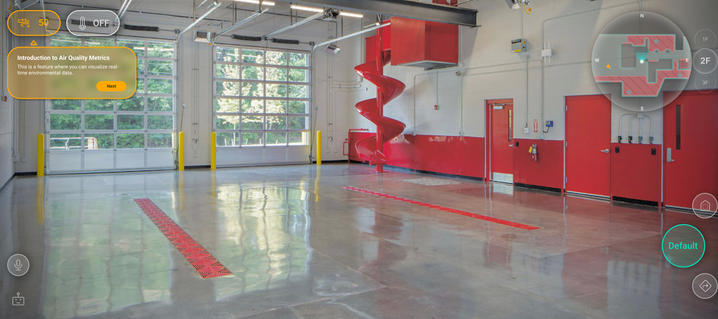User Experience Designer
PyroVision AR Helmet
After research into the future of disaster response robots, I, along with my 3 other team members, strove to find a way to help fire fighters in the event that disaster response robots, in this case, fire response robots, were common place and are responsible for the task of extinguishing fires.
Role
UX Researcher, Usability Analyst, 3D Prototype Modeler
Research
In order to address this opportunity space and problem, we had to conduct both primary and secondary research. We started with secondary research that could inform our choice in primary research methods.

Understanding the User
To better understand our target audience, we created the persona "Thomas Johnson" to embody their struggles, needs, and goals, as well as how our proposed solution aims to address them.

Prototyping and User Testing
Through ideation and multiple rounds of iteration, my team and I came up with the idea to make a firefighter helmet equipped with augmented reality technology. One challenge we faced was the lack of direct access to our target audience for testing and refining our solution. To work around this, we asked users to step into the role of a firefighter after providing them with background on the context and product. We created 2 prototypes: the first, a cardboard mockup of a helmet with an arm in the front to hold a clear film with cut outs of our proposed features (seen below).

Final Product
Through ideation and multiple rounds of iteration, my team and I came up with the idea to make a firefighter helmet equipped with augmented reality technology. The PyroVision Helmet leverages advanced augmented reality technology to enhance situational awareness, equipping firefighters with real-time data to make informed decisions in high-risk environments.

We were tasked with identifying the opportunity space in a world where fire response robots are the standard for extinguishing fires. My team and I discovered that with this responsibility lifted, firefighters could redirect their energy toward other critical efforts, such as evacuation.

Our Secondary research focused on the struggles firefighters face in the field and the other tasks they have to complete in a building fire other than extinguishing the fire, which was then validated through a series of surveys and interviews. These tasks include rescue and evacuation, emergency medical services and hazardous material detection. All of these tasks require increased energy and increased situational awareness.

From there, we mapped the user journey before introducing any solutions to pinpoint exactly where the pain points occur.

After our initial round of testing, participant feedback prompted us to iterate further and develop a new prototype. This time, my team and I designed sample screens that reflected the ideal user experience. We displayed these screens on a projector or widescreen and asked participants to navigate the prototype, allowing us to observe their interactions more effectively.
See below our first digital prototype for one of our key features: Wayfinding

Through intelligent real-time overlays, firefighters can execute evacuations with greater efficiency, accuracy, and safety. With the PyroVision Helmet, the future of emergency response is no longer reactive—it is proactive, data-driven, and built for the next generation of life-saving operations.

Key Features
Structural Integrity Detection
incorporates X-ray technology to assess building stability, preventing entry into unsafe areas.

Wayfinding & GPS Navigation
Provides optimized evacuation routes based on real-time fire conditions and building layouts.

Thermal Imaging
detects heat signatures and locates individuals trapped beyond visible range.

Live Data Integration and Air quality Monitoring
Syncs with fire response robots to deliver up-to-the-second updates on fire spread, structural threats, and safe zones, and measures oxygen levels and detects toxic gases, alerting responders to hazardous conditions.
